Abstract
To determine the relation between exposure to acid mist and laryngeal cancer, the smoking habits, drinking habits, and incidence of laryngeal cancer of 879 male steelworkers exposed to acid mists during pickling operations was ascertained. Sulphuric acid mist was the primary exposure for most men in this cohort. These men had all worked in a pickling operation for a minimum of six months before 1965, with an average duration of exposure of 9.5 years. Exposures to sulphuric acid in the 1970s averaged about 0.2 mg/m3, and earlier exposures were probably similar. Interviews were conducted with all cohort members or their next of kin in 1986 and medical records of decedents were reviewed. Nine workers were identified who had been diagnosed as having laryngeal cancer, using a conservative case definition that required medical record confirmation for any case among decedents and confirmation by a physician for any case among live individuals. Using data from national surveys of cancer incidence as referent rates, 3.44 laryngeal cancers would have been expected. Excess smoking by the exposed cohort compared with the United States population resulted in an upward adjustment of the expected number of cases of laryngeal cancer to 3.92. The standardised incidence rate ratio for laryngeal cancer was 2.30 (9/3.92), with a one sided p value of 0.01 (assuming a Poisson distribution). The finding of excess laryngeal cancer in this cohort is consistent with four other studies published since 1981.
Full text
PDF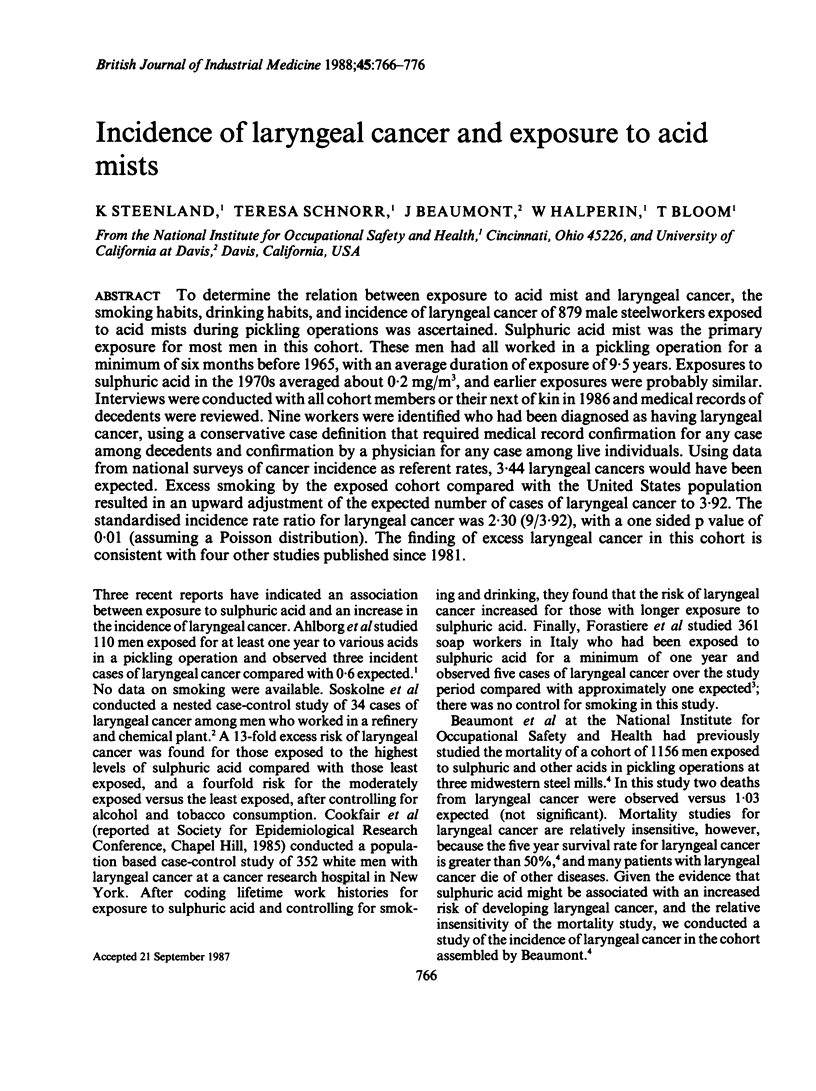
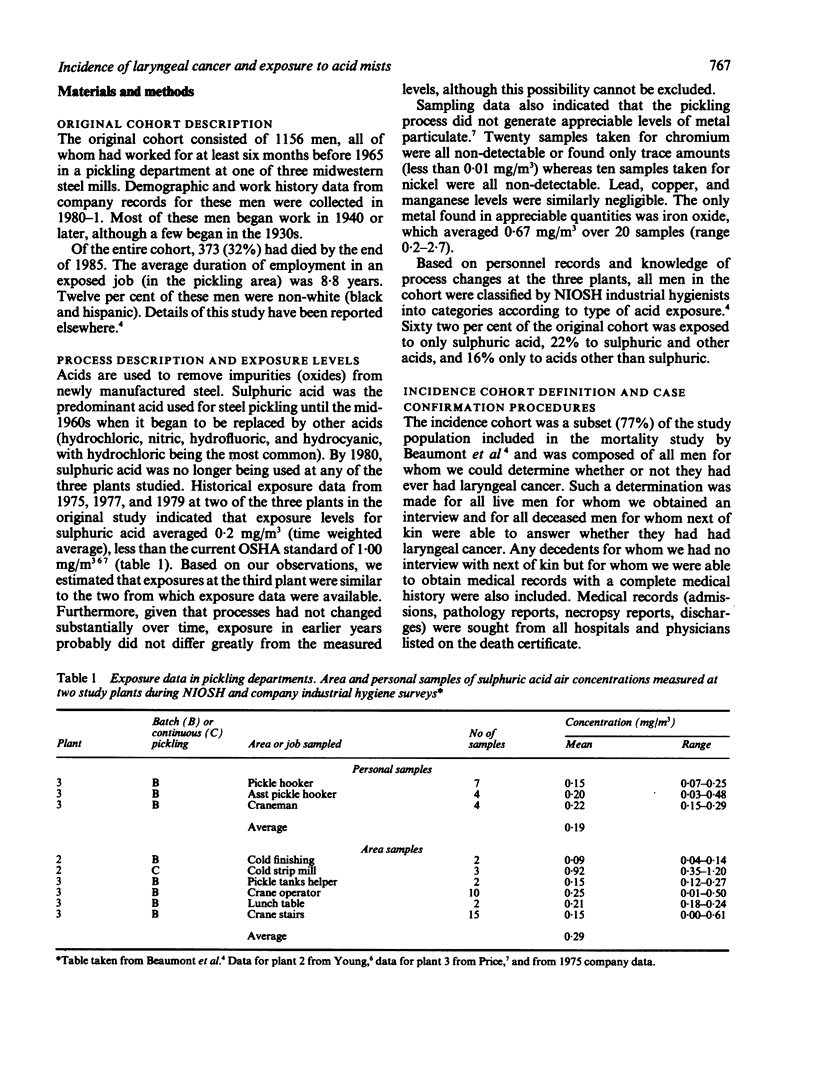
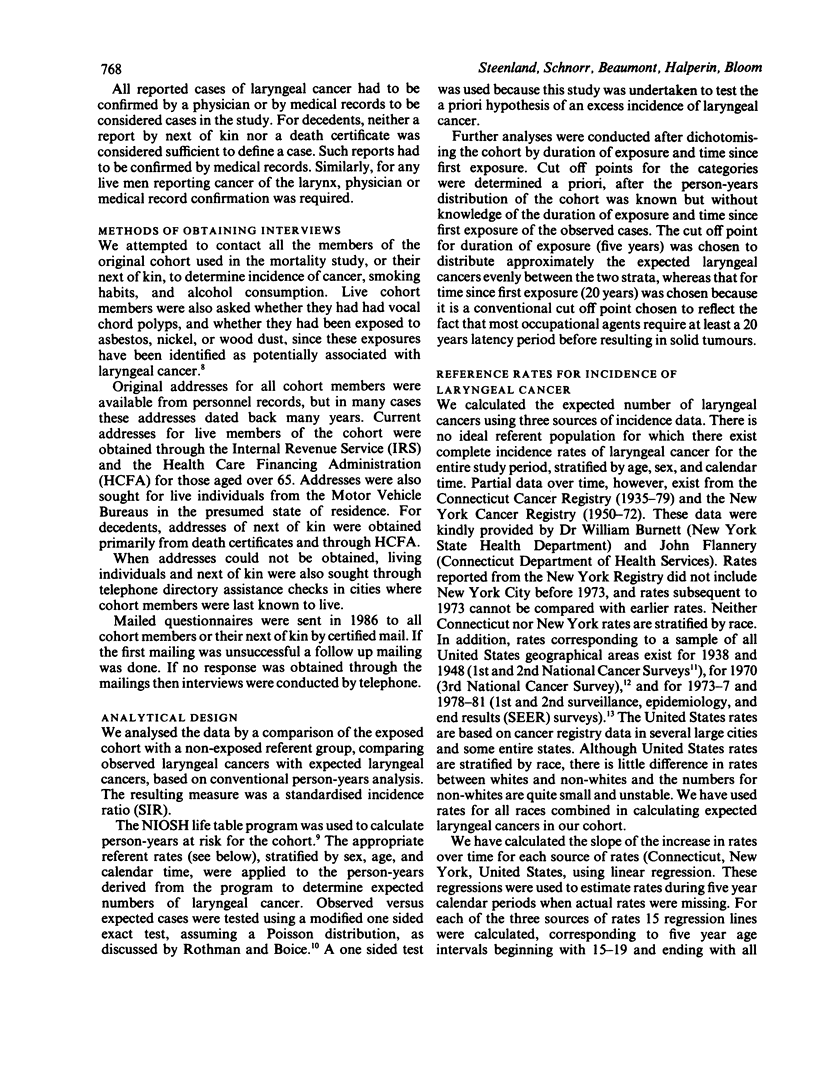
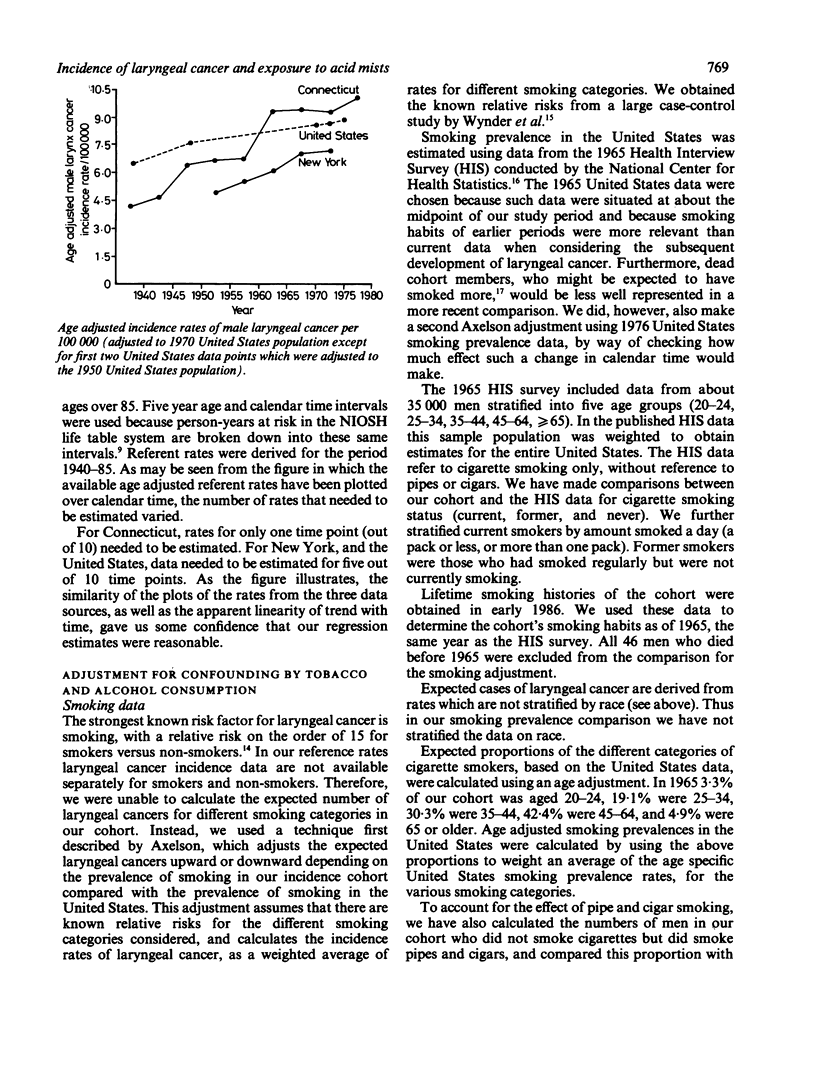
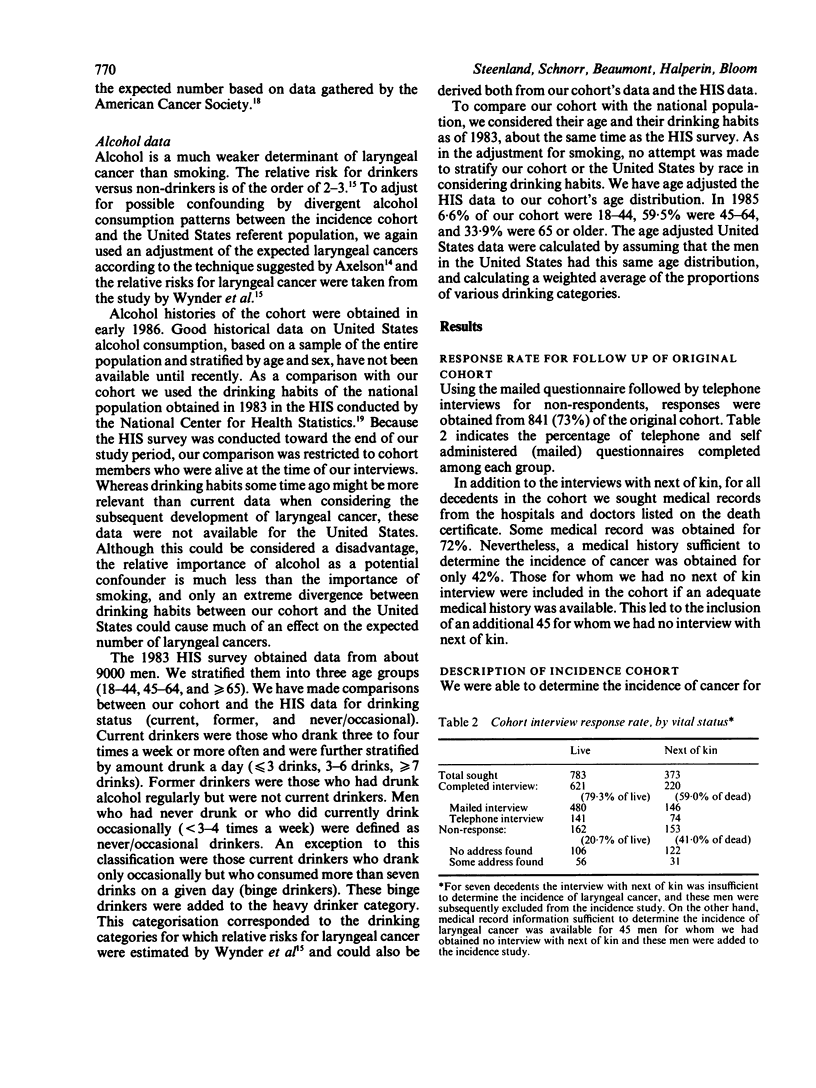
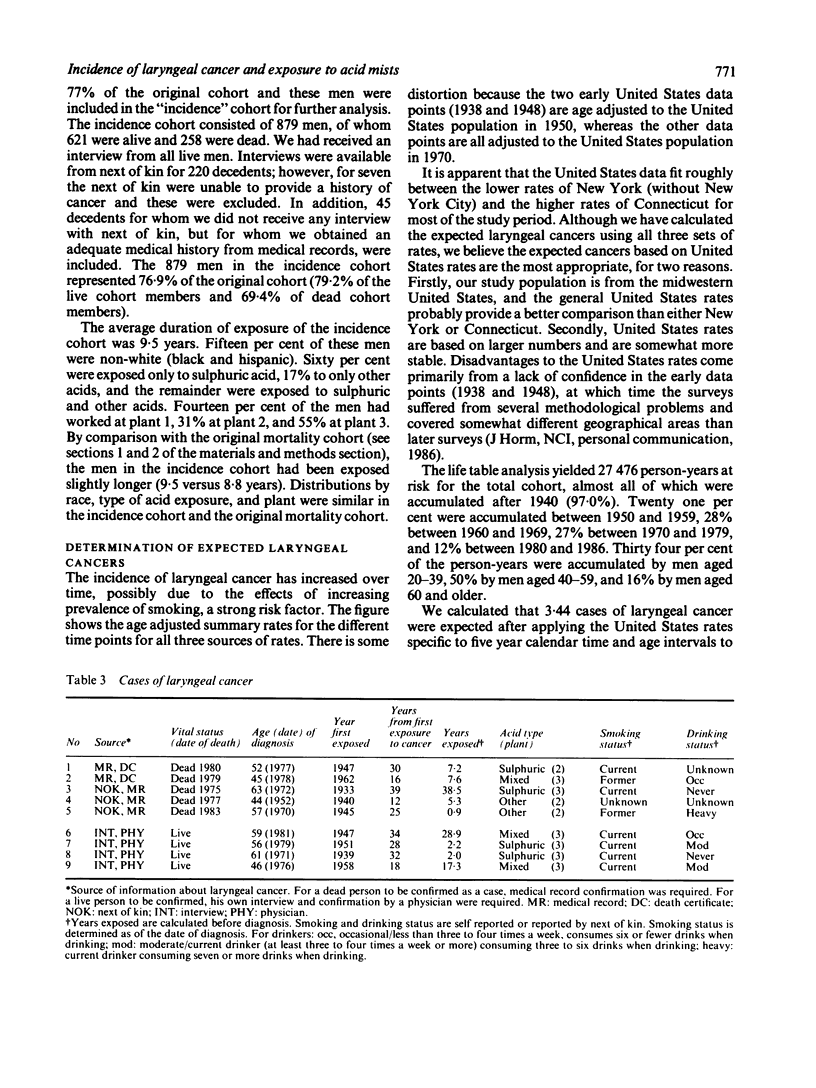
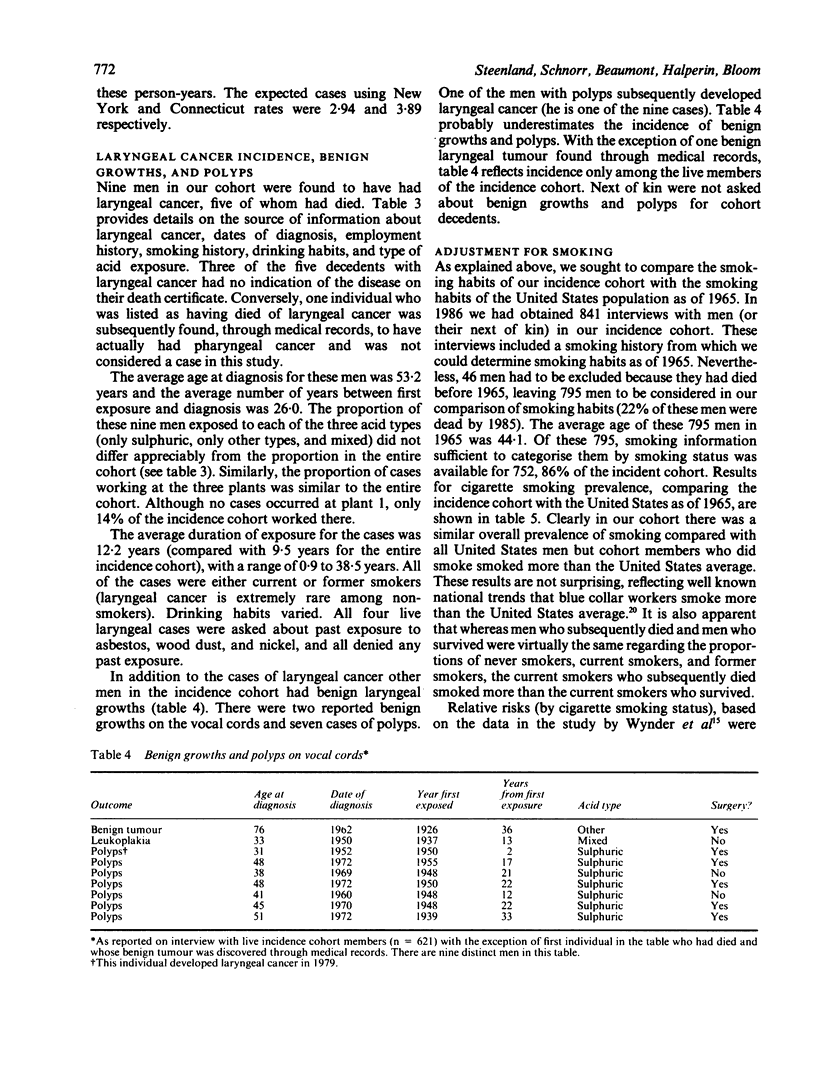
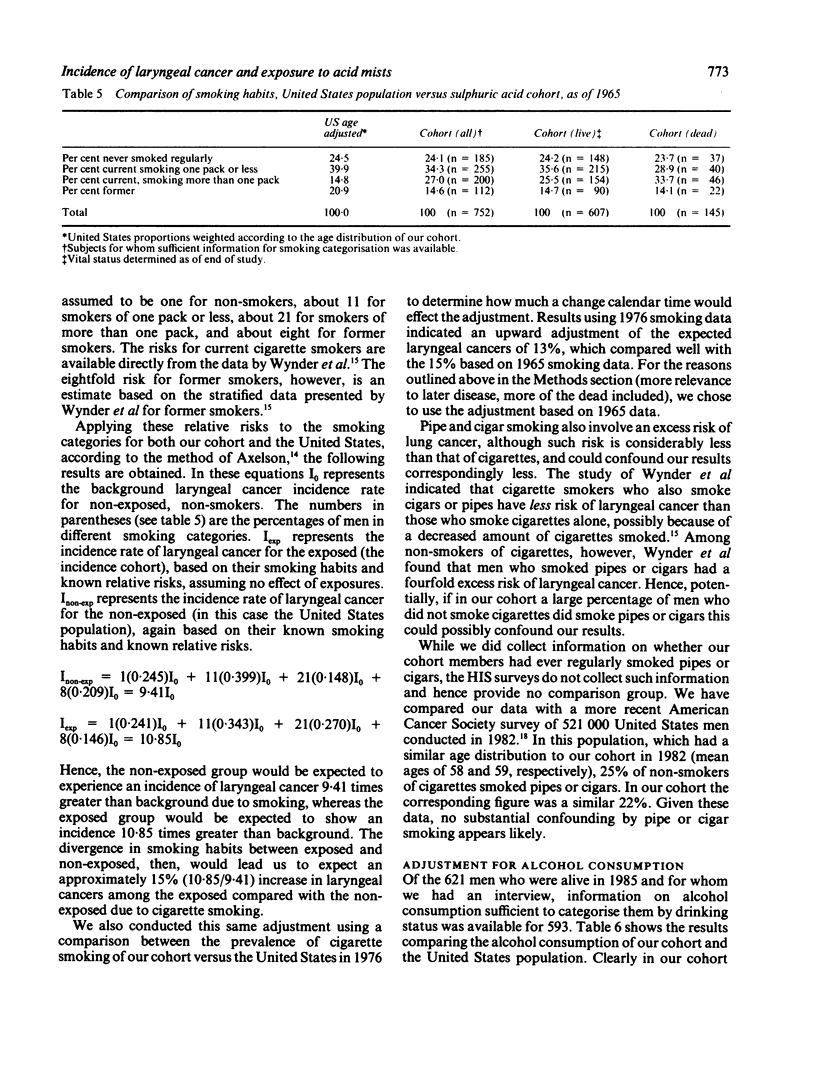
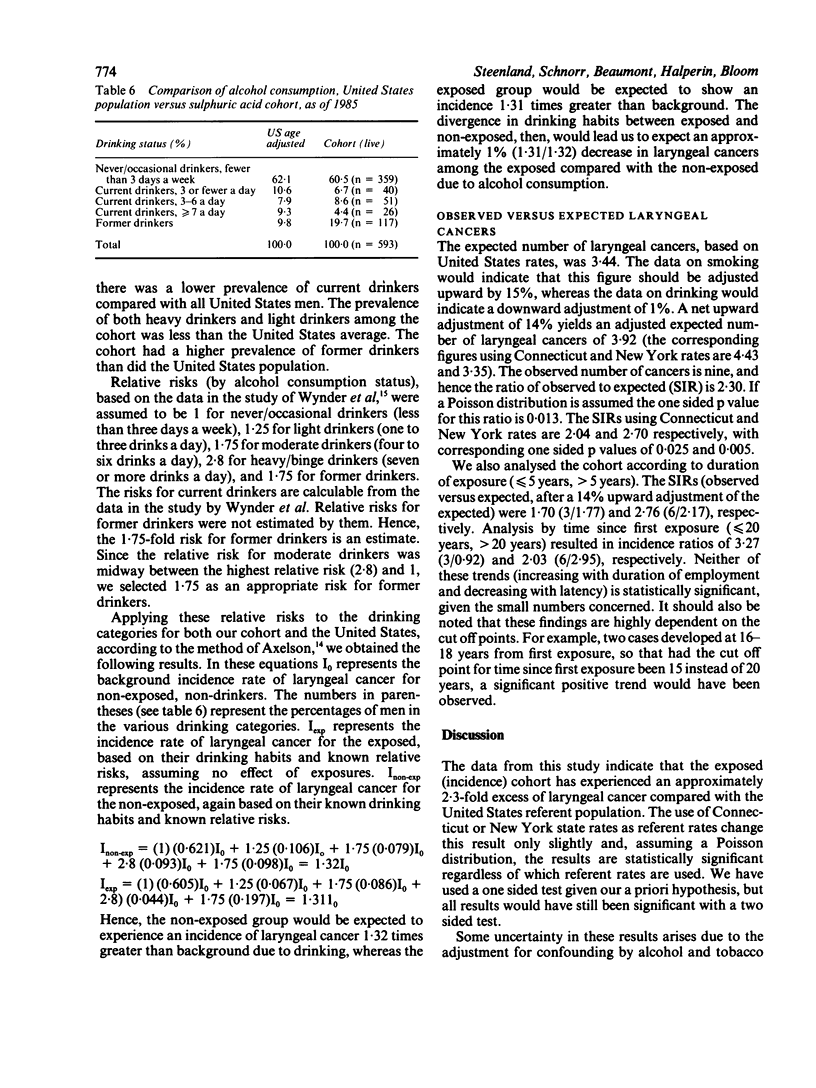
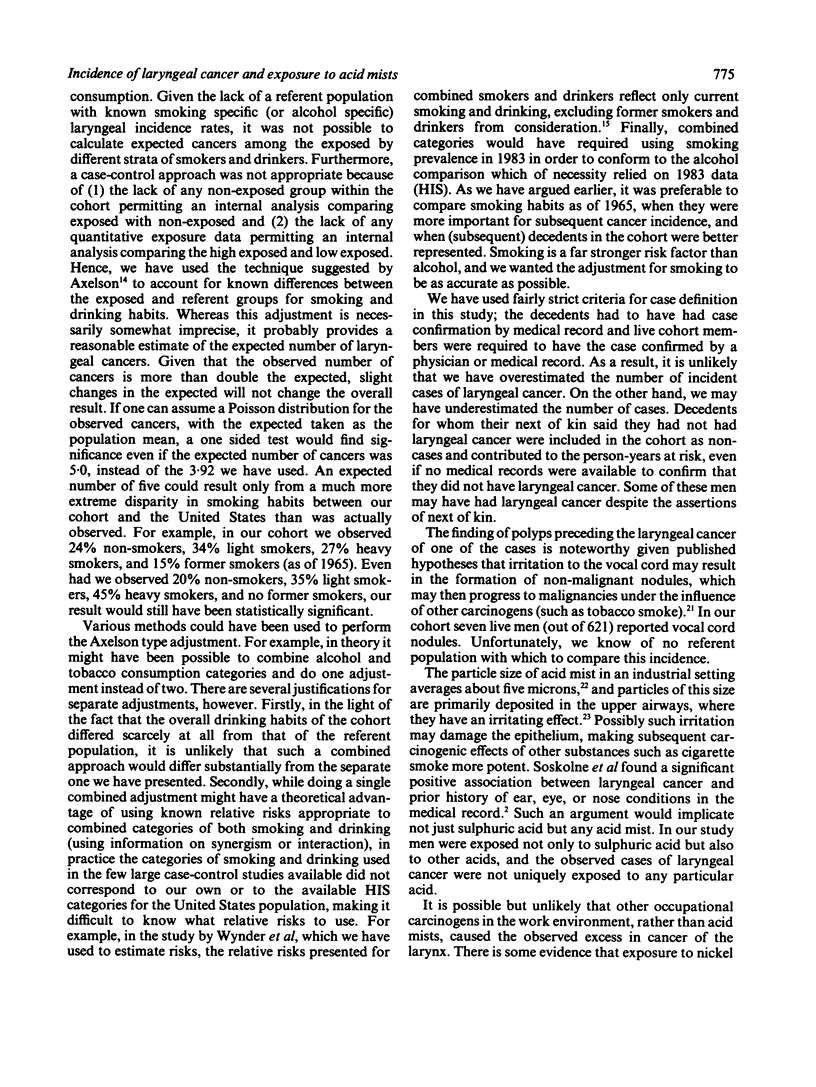
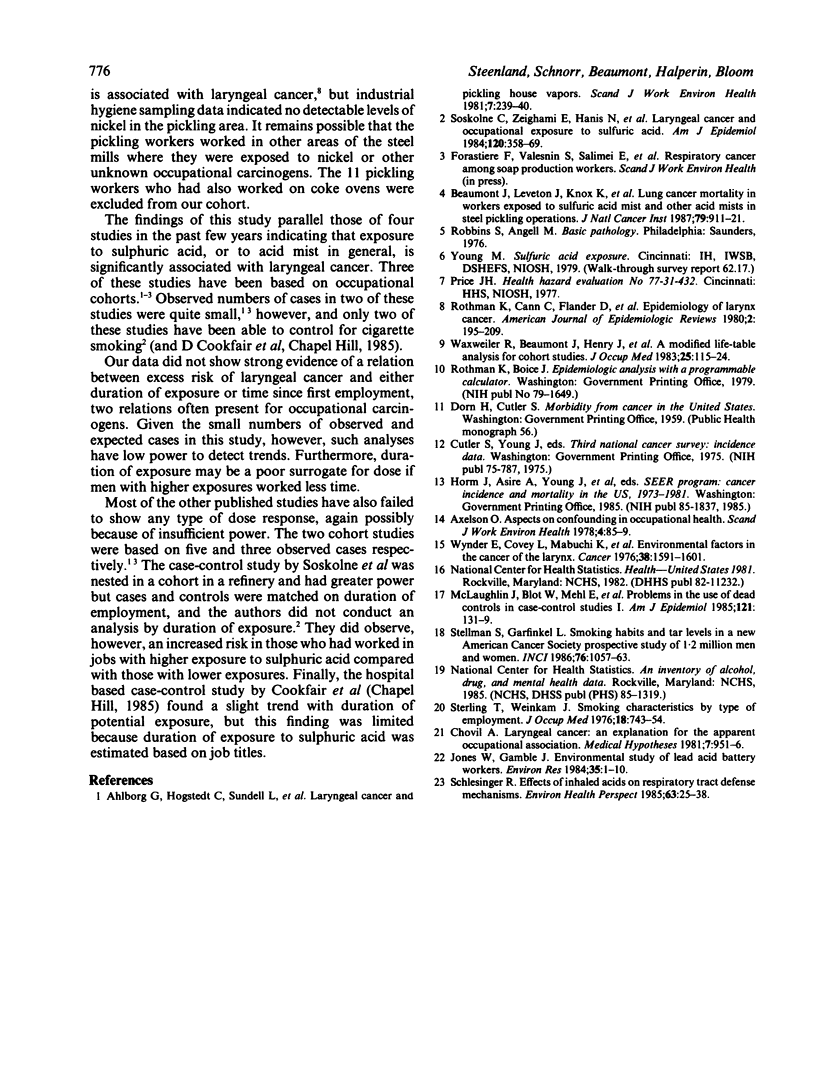
Selected References
These references are in PubMed. This may not be the complete list of references from this article.
- Chovil A. Laryngeal cancer: an explanation for the apparent occupational association. Med Hypotheses. 1981 Jul;7(7):951–956. doi: 10.1016/0306-9877(81)90050-5. [DOI] [PubMed] [Google Scholar]
- Jones W., Gamble J. Epidemiological-environmental study of lead acid battery workers. I. Environmental study of five lead acid battery plants. Environ Res. 1984 Oct;35(1):1–10. doi: 10.1016/0013-9351(84)90110-5. [DOI] [PubMed] [Google Scholar]
- McLaughlin J. K., Blot W. J., Mehl E. S., Mandel J. S. Problems in the use of dead controls in case-control studies. I. General results. Am J Epidemiol. 1985 Jan;121(1):131–139. doi: 10.1093/oxfordjournals.aje.a113975. [DOI] [PubMed] [Google Scholar]
- Rothman K. J., Cann C. I., Flanders D., Fried M. P. Epidemiology of laryngeal cancer. Epidemiol Rev. 1980;2:195–209. doi: 10.1093/oxfordjournals.epirev.a036223. [DOI] [PubMed] [Google Scholar]
- Schlesinger R. B. Effects of inhaled acids on respiratory tract defense mechanisms. Environ Health Perspect. 1985 Nov;63:25–38. doi: 10.1289/ehp.856325. [DOI] [PMC free article] [PubMed] [Google Scholar]
- Soskolne C. L., Zeighami E. A., Hanis N. M., Kupper L. L., Herrmann N., Amsel J., Mausner J. S., Stellman J. M. Laryngeal cancer and occupational exposure to sulfuric acid. Am J Epidemiol. 1984 Sep;120(3):358–369. doi: 10.1093/oxfordjournals.aje.a113900. [DOI] [PubMed] [Google Scholar]
- Stellman S. D., Garfinkel L. Smoking habits and tar levels in a new American Cancer Society prospective study of 1.2 million men and women. J Natl Cancer Inst. 1986 Jun;76(6):1057–1063. [PubMed] [Google Scholar]
- Sterling T. D., Weinkam J. J. Smoking characteristics by type of employment. J Occup Med. 1976 Nov;18(11):743–754. doi: 10.1097/00043764-197611000-00011. [DOI] [PubMed] [Google Scholar]
- Waxweiler R. J., Beaumont J. J., Henry J. A., Brown D. P., Robinson C. F., Ness G. O., Wagoner J. K., Lemen R. A. A modified life-table analysis system for cohort studies. J Occup Med. 1983 Feb;25(2):115–124. [PubMed] [Google Scholar]
- Wynder E. L., Covey L. S., Mabuchi K., Mushinski M. Environmental factors in cancer of the larynx: a second look. Cancer. 1976 Oct;38(4):1591–1601. doi: 10.1002/1097-0142(197610)38:4<1591::aid-cncr2820380425>3.0.co;2-r. [DOI] [PubMed] [Google Scholar]


